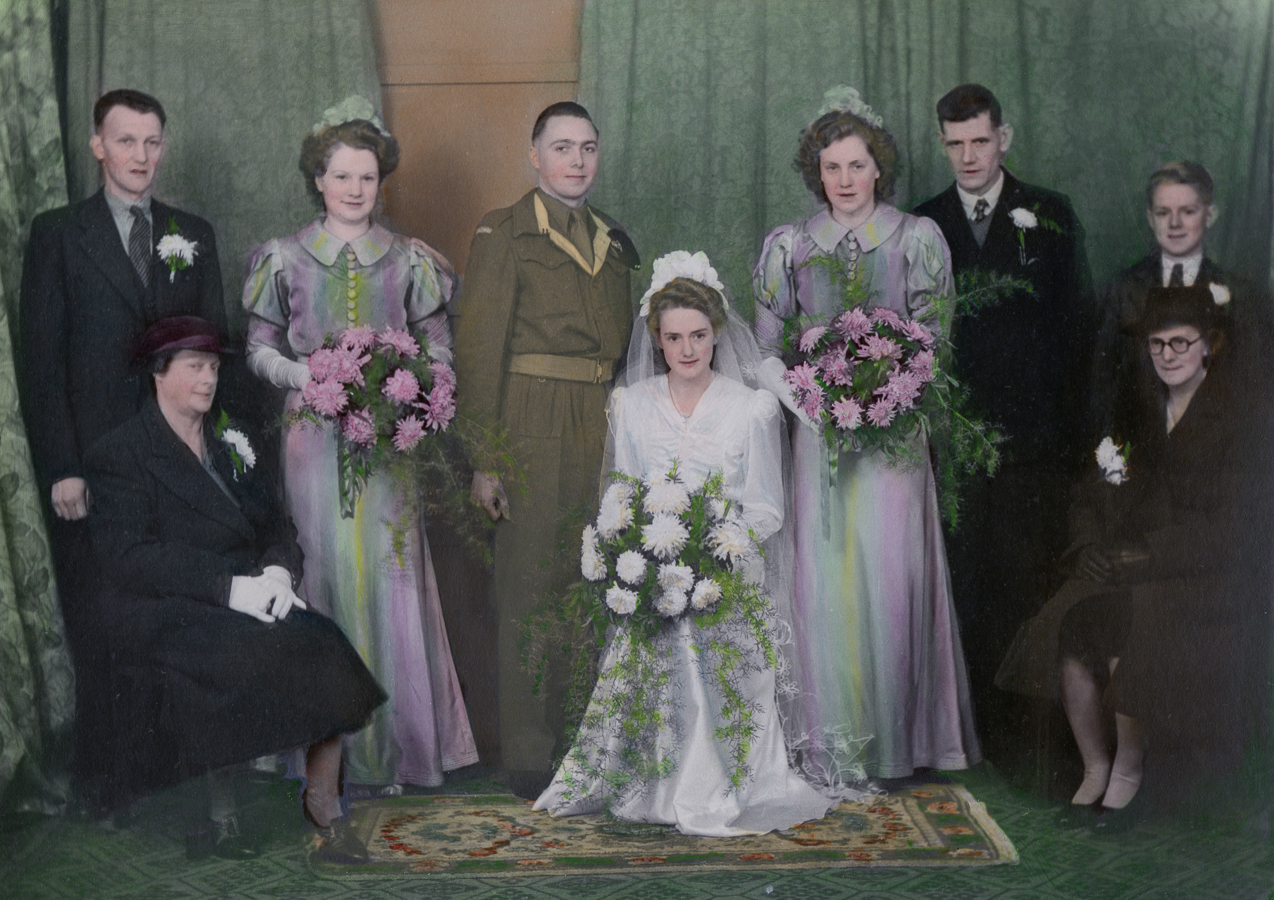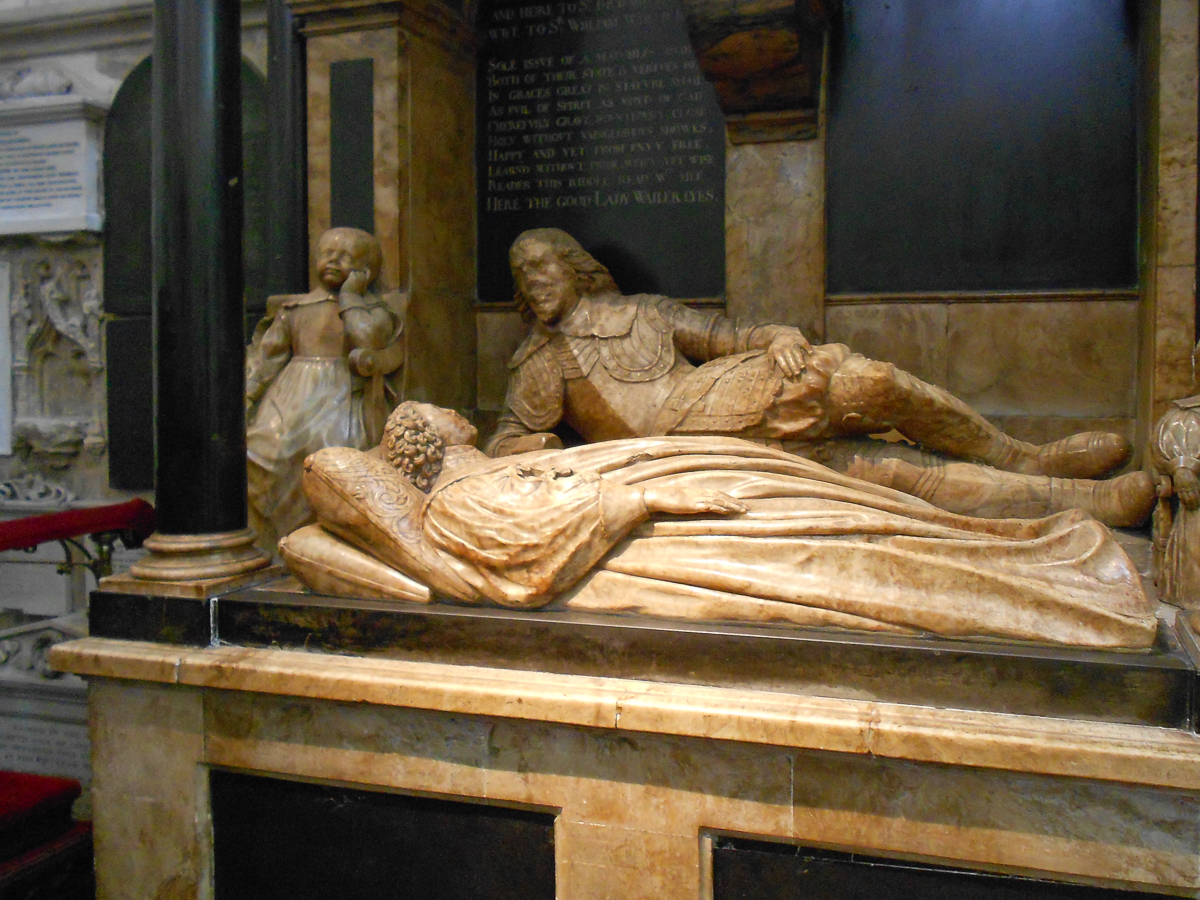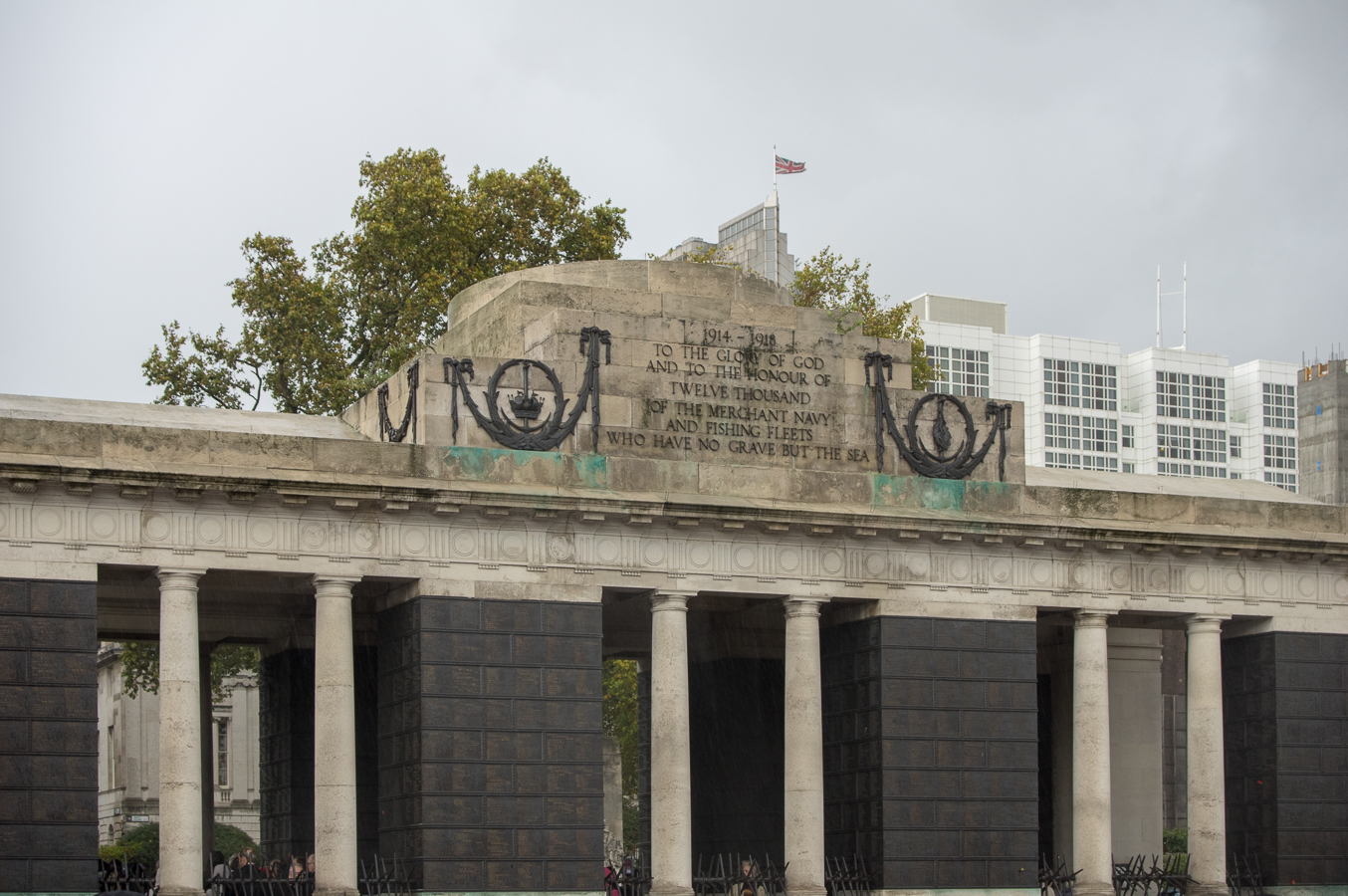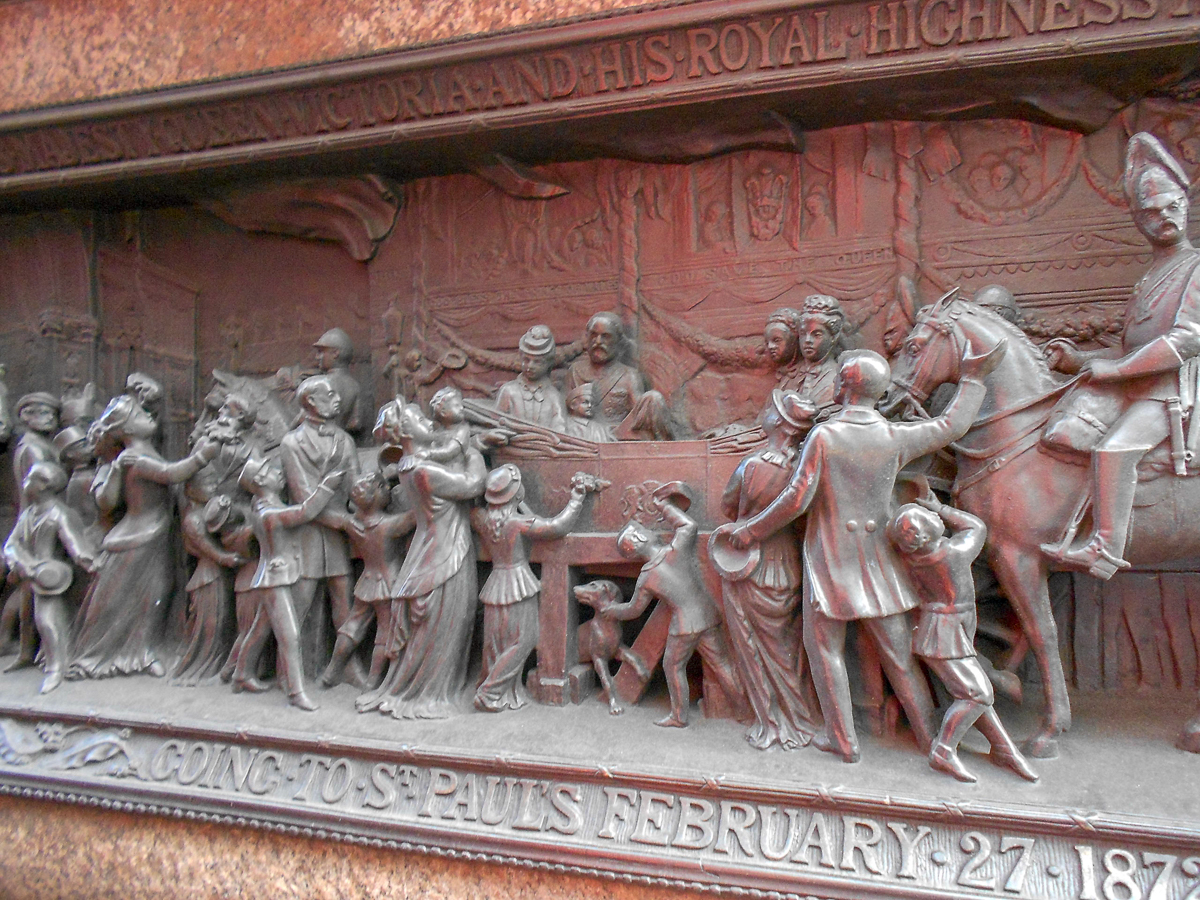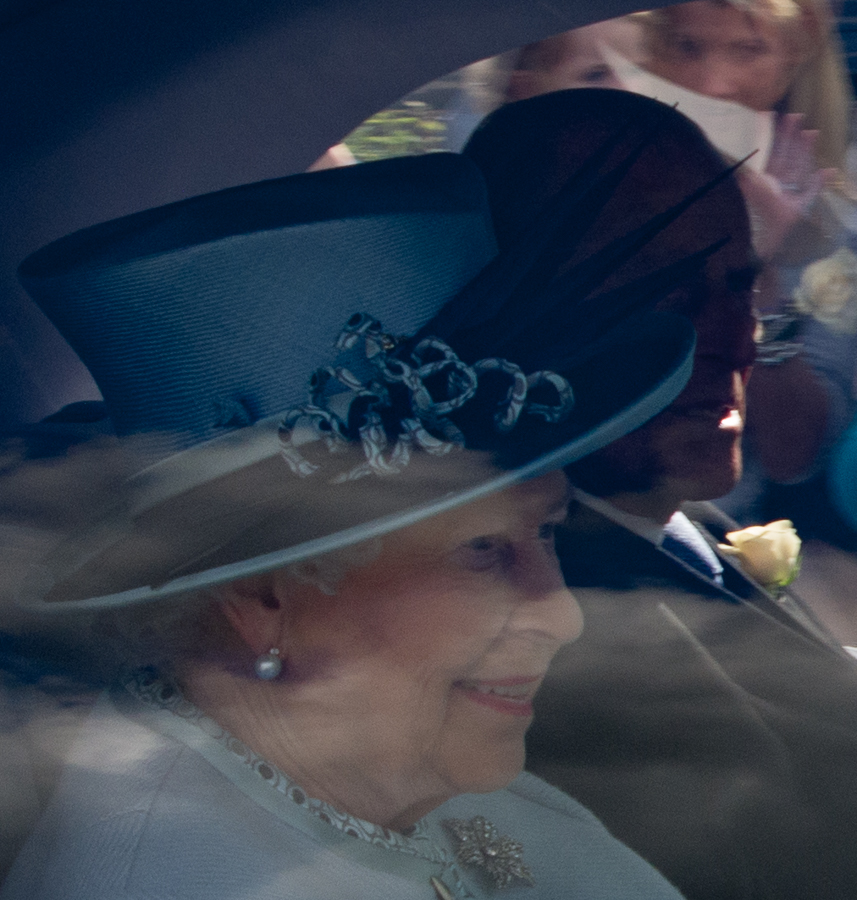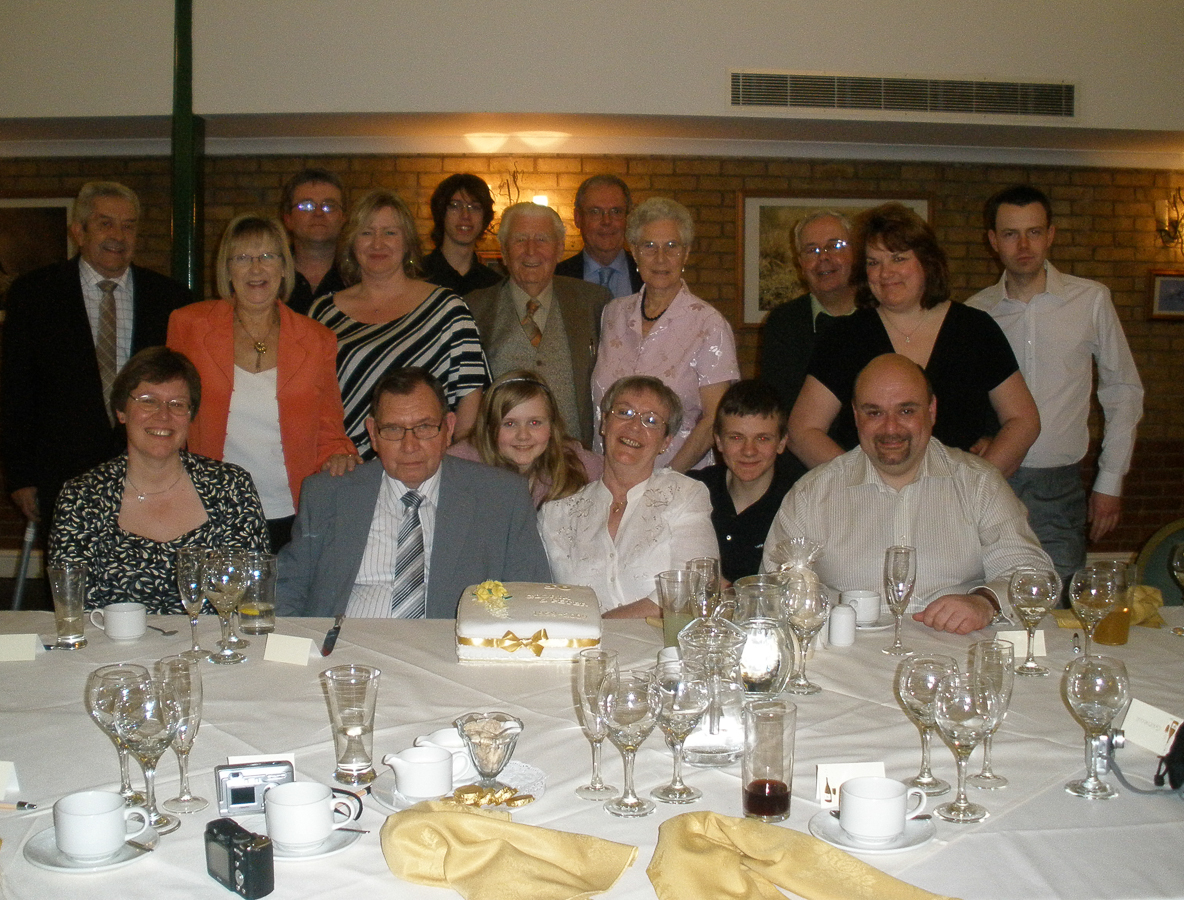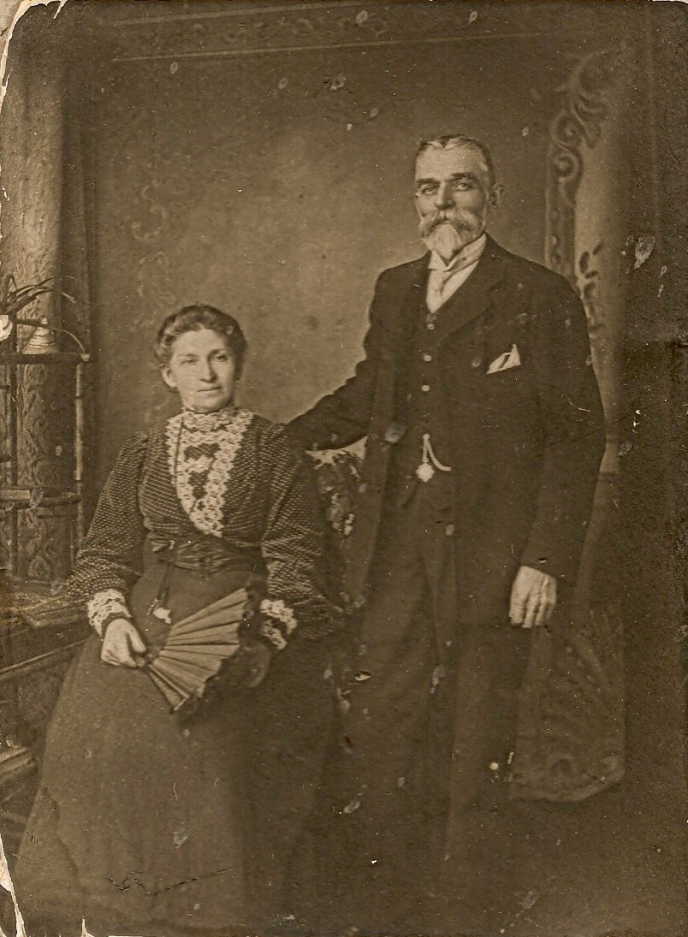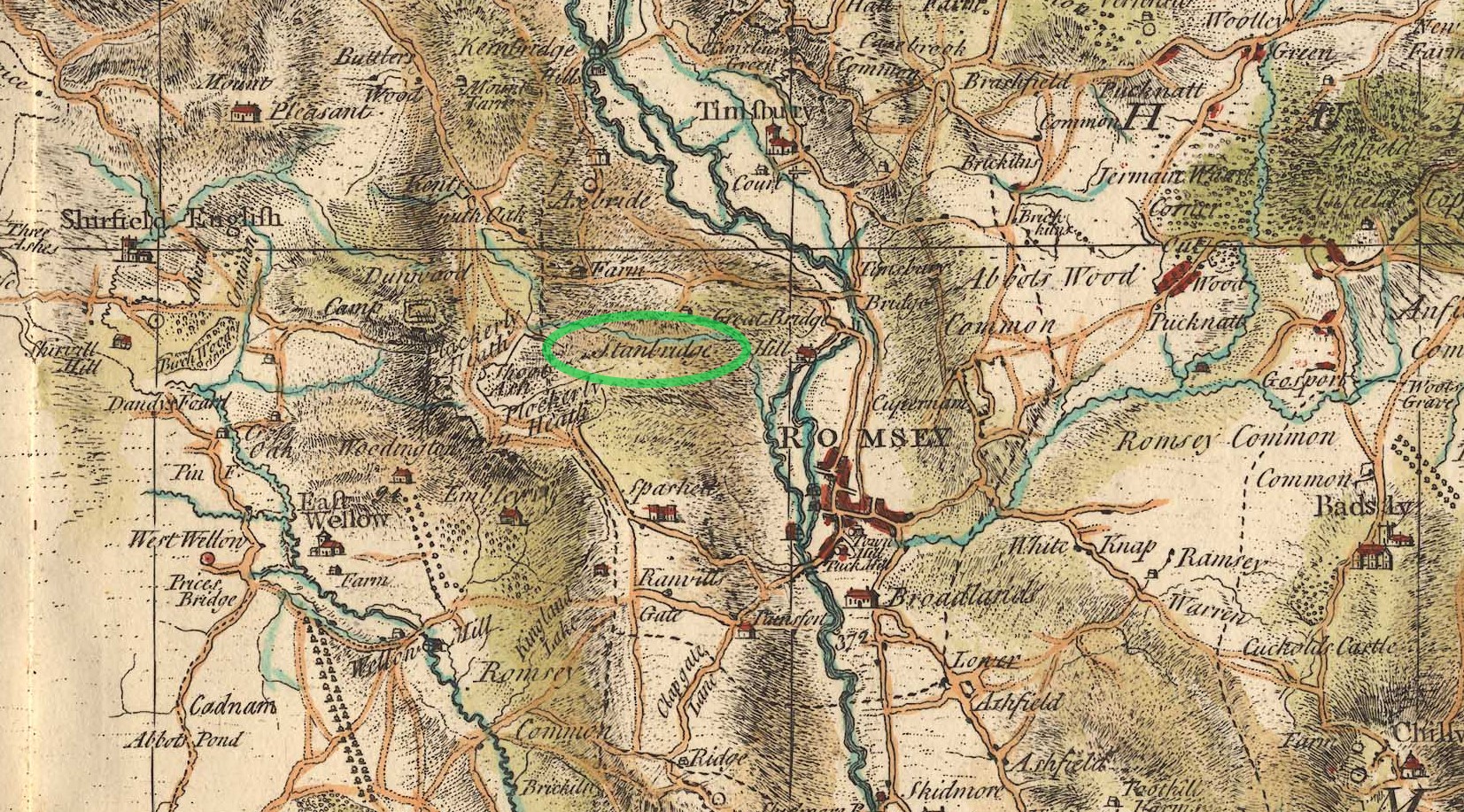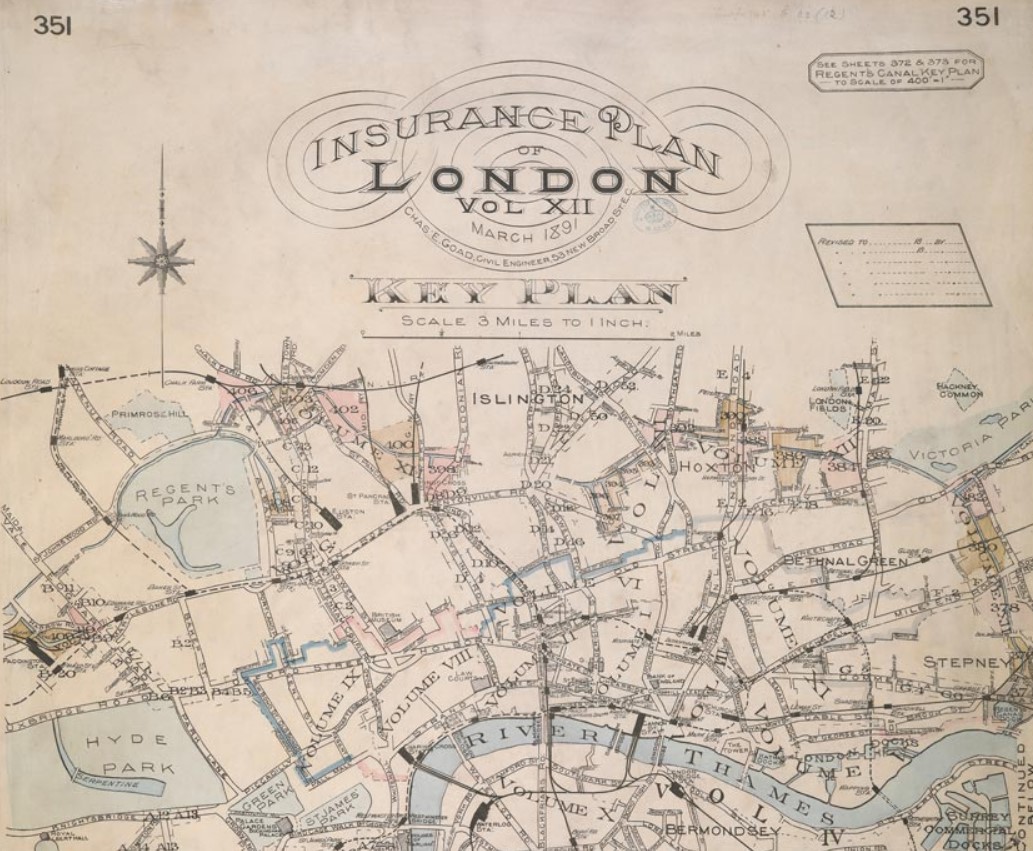House of Bellême
Another pre-conquest branch of our family was the House of Bellême.
An extract from the First House of Bellême.
Roger de montgomery, 1st earl of Shrewsbury, married Mabel de Bellême, the heiress of a great house which held the castles of Bellême and Alencon, Domfront and Sées, with widespread lands along the southern marches of Normandy, not only in that duchy but in the kingdom of France and the county of Maine. The importance of the family is attested by its inclusion in L'Art de Vérifier les Dates;
The first known progenitor of this family is Yves de Bellême.
According to my Family Tree, Yves is my 4th great-grandfather of wife of 4th great-granduncle of husband of 4th cousin 24x removed. Not a direct line and lots of generations back. The route is via Elizabeth Plantagenet of Rhuddlan 1282-1316 and the Pomeroy side of my family.
 Lands of the House of Belleme - By Osbern - J. Decaens et G. Louise, CC BY-SA 3.0, https://commons.wikimedia.org/w/index.php?curid=1685359
Lands of the House of Belleme - By Osbern - J. Decaens et G. Louise, CC BY-SA 3.0, https://commons.wikimedia.org/w/index.php?curid=1685359
Yves de Bellême
Yves de Bellême was Seigneur de Bellême, and held the castle and lands of Bellême, of the King of France, as well as the Sonnois and part of the Passais, both held of the Count of Maine. That he held part of the march-lands of Passais is known from his having given abbot Gauzlin of Fleury Abbey the lands of Magny-le-Désert.
William de Bellême
William was the son of Yves de Bellême and his wife Godeheut. William succeeded his father as Seigneur de Bellême. William's siblings were, his brothers, Yves who became the Abbot of Fleury, Avesgaud who became the Bishop of Le Mans. Also his sisters, Hildeburg, who married Aimon, Seigneur de Chateau-du-Loir, and Godehilde, who married Hamon-aux-Dents or Hamon Le Dentu. He was the 1st Baron of Le Creully and he was Lord over Creully, Torigni, Évrecy & St. Scolasse-sur-Sarthe, but he lost all his lands, after trying to kill William the bastard, in the battle of Val-ès-Dunes, Normandy, France.
With the consent of Richard I, Duke of Normandy William had constructed two castles, one at Alençon and the other at Domfront, while the caput of Yves' lordship was the castle of Bellême, constructed "a quarter of a league from the old dungeon of Bellême" in Maine. The first mention of William in any records was in 1000 as Marshall of the king's forces when he accompanied the King of France to Toulouse, the next mention being his succeeding his father in 1005. Also, in 1005 William along with his mother made several grants to local churches including the church of Boece, to which his father had founded in his castle of Bellême. Initially William attempted to revoke a gift of his father to Fleury Abbey but was so impressed with the abbot Gauzlin's appeal he restored the gift and also allowed his young son Benoit to become a monk there.
His brother Avesgaud, Bishop of Le Mans was engaged in constant warfare with Herbert I, Count of Maine. In 1020 Bishop Avesgaud fled to his brother's castle of Bellême after being driven out of his see by count Herbert, for which Avesgaud placed an interdict on Herbert and his lands and excommunicated the count. William joined forces with his brother Avesgaud attacking count Herbert at the castle of Ballon. At first William and Avesgaud were beaten back but Giroie (aka Géré), a vassal of William's, held his ground and defeated Herbert's forces completely. William de Bellême introduced Giroie to Duke Richard at Rouen who rewarded Giroie with the lands of Heugon.
In 1027 when Robert I, Duke of Normandy succeeded his brother Richard III, William de Bellême revolted against him. Robert laid siege to his castle of Bellême until William surrendered then had to humbly ask for forgiveness (in bare feet with a saddle on his shoulders). Having been forgiven and his fief of Alençon restored, William sent his sons Fulk and Robert to harass the Normans, but they were defeated and Fulk was killed in battle at Blavon.
William married Mathilde of Condé-sur-Noireau. The couple had six sons and no recorded daughters.
- Fulk, died in his father's lifetime at the battle at Blavon..
- Warin, died in 1026 under mysterious circumstances. He married Melisende, Viscountess of Châteaudun; their daughter Adela married Rotrou, Count of Mortagne (whose grandson was Rotrou 'the Great', Count of Perche and Morgagne).
- Robert, succeeded his father as Seigneur de Bellême, but was murdered in prison.
- Ives, Seigneur de Bellême and Bishop of Sées
- William I Talvas held the honor of Bellême in right of his brother Ives.
- Benoit, a monk at Fleury Abbey.
So it appears that of his sons, Fulk and Warin pre-deceased William, and his successor, Robert was murdered shortly thereafter. Yves (a.k.a. Ivo) inherited the lands of Bellême at the death of Robert about two years before he became Bishop of Séez in 1035. From then it down to Ives take on the role of Seigneur de Bellême together with his position as the Bishop of Sées. Apparently, Ives left the tasks, roles, and responsibilities of Seigneur de Bellême, to his brother William. Perhaps because of the workload but more likely because of the conflict of being a Lord, or warlord and a bishop at the same time. According to Orderic Vitalis his nickname Talvas meaning shield, presumably alluded to his hardness or callousness like that of a shield. He could not use the title of Seigneur or Load as that title was actually held by his brother.
He obtained the lands of Bellême from his brother Yves de Bellême, Bishop of Séez who held them of the King of France while Alençon was held of the Duke of Normandy and Domfront of the Count of Maine. He therefore had to swear allegiance to three people, at the same time despite the fact that those three would not always be on good terms with each other.
It may help to read about France in the Middle Ages at this point.
William I Talvas
While as treacherous and self-serving as any of his family before him he surpassed them in wickedness and cruelty. He had married Hildeburg, daughter of a nobleman named Arnulf, who bore him two children. According to Orderic, William had her strangled on her way to church, because she loved God and would not support his wickedness. William married secondly a daughter of Ralf de Beaumont, Viscount of Maine.
Among the private feuds going on during the minority of Duke William was one that erupted between William Talvas and William fitz Giroie. William fitz Giroie was a vassal of William Talvas and his father Giroie, Lord of Échauffour had assisted Talvas' father and uncle in the struggles against Herbert I Wake-dog, Count of Maine. William fitz Giroie himself had greatly assisted William Talvas in obtaining his own lands, apparently by force. But William fitz Giroie was also a vassal of Geoffrey de Mayenne, an adherent, in turn, of the Count of Maine. About 1044 William Talvas attacked the castle of Montaigu which was being defended by William fitz Giroie. Unable to defeat the castle William Talvas captured Geoffrey de Mayenne and held him prisoner until William Fitz Giroie destroyed the castle of Montaigu. William fitz Giroie immediately razed his own castle to free his lord and in return Geoffrey de Mayenne built fitz Giroie a new castle at St. Cenery on the river Sarthe. This apparently caused great resentment in William Talvas.
On the occasion of his second wedding, William Talvas invited William fitz Giroie to attend. Suspecting nothing fitz Giroie while a guest at the festivities was suddenly seized by Talvas' men and imprisoned, then according to Orderic horribly mutilated and blinded before being released. Somehow William Giroie survived his torture and mutilation and retired to Bec Abbey to live out the remainder of his life as a monk. To avenge this atrocity the sons and kinsmen of William fitz Giroie sacked and destroyed the lands of William Talvas who would not face them in the field. Finally, Talvas' son Arnulf rebelled and exiled his father, now reviled by everyone. He wandered until he was taken in by the de Montgomery family whose son Roger agreed to marry his daughter Mabel in return for the lands William lost. It seems certain that after the death of Arnulf the following year, that William Talvas recovered his lands. William confirmed a gift to St. Aubin of Angers made by his brother Yves circa 1060-2 and after that nothing more is heard of him.
Mabel de Bellême
Mabel was the daughter of William I Talvas and his first wife Hildeburg. She was the heiress of her father’s estates, her half-brother Oliver apparently being excluded, inheriting on her father's death in 1060. She also inherited the remainder of the Bellême honour in 1070 at the death of her uncle Yves, Bishop of Séez and Lord of Bellême. When their father was exiled by her brother Arnulf in 1048 she accompanied him until both were taken in by the Montgomery family. Between 1050-1054 she married Roger II de Montgomery, later 1st Earl of Shrewsbury. Roger II de Montgomery was already a favourite of Duke William and by being given in marriage to Mabel it increased his fortunes even further.
Her husband Roger had not participated in the Norman conquest of England, but had remained behind in Normandy as co-regent along with William's wife, Matilda of Flanders. He had also contributed 60 ships to Duke William's invasion force. He joined the king in England in 1067 and was rewarded with the earldom of Shropshire and a number of estates to the point that he was one of the largest landholders in the Domesday Book.
She and her husband Roger transferred the church of Saint-Martin of Séez to Evroul and petitioned her uncle Yves, Bishop of Séez, to build a monastery there on lands from her estates. The consecration was in 1061 at which time Mabel made additional gifts.
A good pious lady making gifts to the church? I think not.
Of all of Orderic’s female subjects Mabel was the most cunning and treacherous; if not entirely for her own misdeeds then as the mother of Robert de Bellême, who had a reputation for savagery as well as cruelty. In one passage Orderic describes her as "small, very talkative, ready enough to do evil, shrewd and jocular, extremely cruel and daring."
In perpetuating her family’s feud with the Giroie family she set her sights on Arnold de Echauffour, the son of William fitz Giroie who her father had mutilated at his wedding celebration.[a] She obtained part of his estates when she and her husband Roger convinced Duke William to confiscate his lands. In 1063 however, Arnold was promised forgiveness by the Duke and was to have his lands restored. To prevent this Mabel plotted to kill Arnold. She attempted to murder Arnold of Echauffour by poisoning a glass of wine but he declined to drink. Her husband's brother, refreshing himself after a long ride, drank the wine and died shortly thereafter. In the end though she bribed Arnold's chamberlain providing him with the necessary poison, this time being successful.
Excepting Theodoric, abbot of the abbey of Saint-Evroul, who she listened to at times, Mabel was hostile to most members of the clergy; but her husband loved the monks at Saint-Evroul so she found it necessary to be more subtle. In an incident in 1064, she deliberately burdened their limited resources by visiting the abbey for extended stays with a large retinue of her soldiers. When rebuked by Theodoric the abbot for her callousness she snapped back that the next time she would visit with an even larger group. The abbot predicted that if she did not repent of her evilness she would suffer great pains and that very evening she did. She left the abbey in great haste as well as in great pain and did not abuse their hospitality again.
Mabel continued her wickedness, causing many nobles to lose their lands and become destitute. In 1077 she took the hereditary lands of Hugh Bunel by force. Two years later while coming out of her bath, she was killed by some men who had crept into the castle. Hugh had enlisted the help of his three brothers, gained entry to the castle of Bures on the Dives and struck off her head with his sword. The murderers were pursued but escaped by destroying a bridge behind them. Mabel's murder occurred on 2 December 1079 and she was buried three days later at Troarn.
Ok, a nasty branch of my Family Tree. Confusing with Dukes having more power than Kings, boarders and lands being different and power struggles between the Lords, Bishops, and Dukes.
Well it gets even more complicated now as it is after the Conquest in 1066 and English Titles and Lands are mixed in with Continental ones.
Roger the Great de Montgomery
Roger de Montgomery (died 1094), also known as Roger the Great de Montgomery, was the first Earl of Shrewsbury, and Earl of Arundel, Sussex. His father was Roger de Montgomery, seigneur of Montgomery, and was a relative, probably a grandnephew, of the Duchess Gunnor, wife of Duke Richard I of Normandy. The elder Roger had large holdings in central Normandy, chiefly in the valley of the Dives, which the younger Roger inherited.
These lands were added to those of Mable de Bellême when she and Roger the Great de Montgomery married.
Roger was one of William the Conqueror's principal counsellors, playing a major role in the Council of Lillebonne. He may not have fought in the initial invasion of England in 1066, instead staying behind to help govern Normandy. According to Wace's Roman de Rou, however, he commanded the Norman right flank at Hastings, returning to Normandy with King William in 1067. Afterwards he was entrusted with land in two places critical for the defence of England, receiving the Rape of Arundel at the end of 1067 (or in early 1068), and in November 1071 he was created Earl of Shrewsbury; a few historians believe that while he received the Shropshire territories in 1071 he was not created Earl until a few years later. In 1083, he founded Shrewsbury Abbey.
Roger was thus one of the half dozen greatest magnates in England during William the Conqueror's reign. William gave Earl Roger nearly all of what is now the county of West Sussex, which at the time of the Domesday Survey was the Rape of Arundel. The Rape of Arundel was eventually split into two rapes, one continuing with the name Rape of Arundel and the other became the Rape of Chichester.[3] Besides the 83 manors in Sussex, his possessions also included seven-eighths of Shropshire which was associated with the earldom of Shrewsbury, he had estates in Surrey (4 manors), Hampshire (9 manors), Wiltshire (3 manors), Middlesex (8 manors), Gloucestershire (1 manor), Worcestershire (2 manors), Cambridgeshire (8 manors), Warwickshire (11 manors), and Staffordshire (30 manors).[4] The income from Roger's estates would amount to about £2,000 per year, in 1086 the landed wealth for England was around £72,000, so it would have represented almost 3% of the nation's GDP.
After William I's death in 1087, Roger joined with other rebels to overthrow the newly crowned king, William II, in the Rebellion of 1088. However, William was able to convince Roger to abandon the rebellion and side with him. This worked out favourably for Roger, as the rebels were beaten and lost their land holdings in England.
Roger de Montgomery, seigneur of Montgomery and vicomte of the Hiémois died on 7th February 1055, which is when his son Roger the Great de Montgomery succeeded him.
Roger held the lands of Saint-Germain-de-Montgommery and Sainte-Foy-de-Montgommery, both of which show traces of early castles. He acquired the office of vicomte of the Hiémois probably about the time Robert I became Duke in 1027. In c. 1031–1032 he witnessed a charter to the abbey of St. Wandrille by Robert I, Duke of Normandy as vicomte. Like Duke Robert, Roger began acquiring church properties, among these, c. 1025–27, half the town of Bernay. He took over a wood at 'Crispus Fagidus' which belonged to Jumièges Abbey in the 1030s. He suppressed a market held by the same abbey and transferred it into his own domain. He later returned the market to the abbey and paid restitution for their losses.
In 1035 at Robert I's death, his great uncle, Robert Archbishop of Rouen ruled Normandy as regent. Roger seems to have lost favour with the young duke as well as his vicomte office as he signed an early charter of Duke William simply as Roger of Montgomery. At the archbishop’s death in 1037, anarchy broke out in Normandy and among the rebels was Roger de Montgomery, formerly one of Duke Robert's closest companions, who, after being defeated in his own territory, fled to the court of Henry I of France. Roger had been forced into exile by Osbern the Steward who was afterwards killed by William de Montgomery, Roger's son. Roger died on February 7, 1055 in exile in Paris.[citation needed] In 1068 his wife was still holding lands at Bures and Saint-Pair.
After the Conquest, 1066.
This is not the exact split between before and after. For instance Mable was born before, but murdered, after 1066. It is however a convenient place to turn the proverbial page.
Mabel and her husband, Roger de Montgomery had ten children:
- Roger of Montgomery, oldest son, died young.
- Robert de Bellême, Count of Alençcon in 1082, he succeeded his younger brother Hugh as 3rd Earl of Shrewsbury. He married Agnes, Countess of Ponthieu and died in 1131.
- Hugh of Montgomery, 2nd Earl of Shrewsbury, died without issue 1098.
- Roger the Poitevin, Vicomte d'Hiemois, married Adelmode de la Marche.
- Philip of Montgomery.
- Arnulf of Montgomery, married Lafracota daughter of Muirchertach Ua Briain.
- Sibyl of Montgomory, she married Robert Fitzhamon, Lord of Creully.
- Emma, abbess of Almenêches.
- Matilda (Maud) of Montgomery, she married Robert, Count of Mortain and died c. 1085.
- Mabel of Montgomery, she married Hugh de Châteauneuf.

